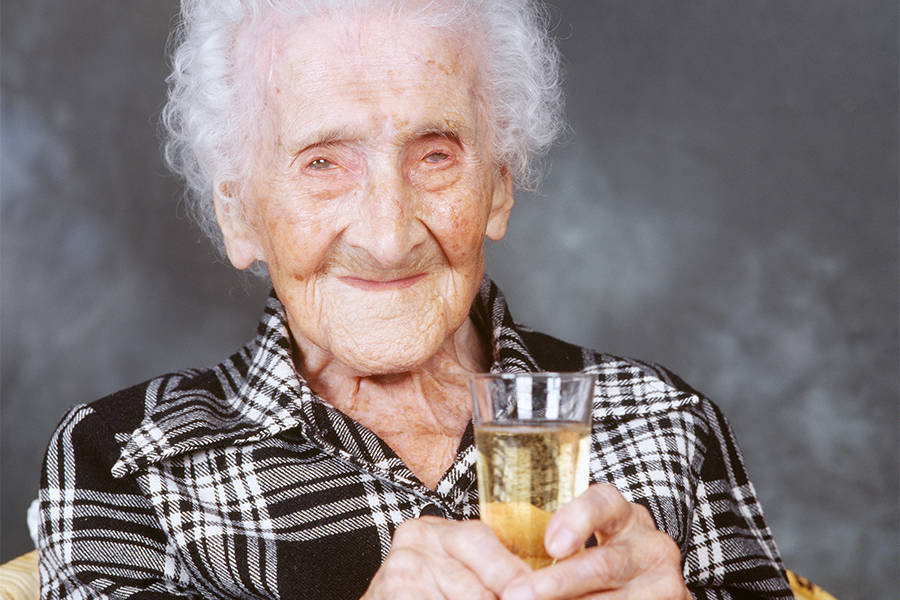Section 11: Late Adulthood
Why explain development and change through late adulthood?

Jeanne Calment was a typical woman of her time. Born in Arles, France, in 1875, she lived a rather unremarkable life by most accounts—except for one thing: when she died in 1997 at the age of 122, she was on record as the oldest person to have ever lived. “I just kept getting older and couldn’t help it,” she once said.
So, what does the extraordinary life of this ordinary woman have to do with us today? More than you might think. In her day, living to 100 was extremely rare. But today, in the United States, people 100 and over represent the second fastest-growing age group in the country. The fastest? People over 85. Many 65-year-olds today will live well into their 90s.
Furthermore, because of increases in average life expectancy, each new generation can expect to live longer than their parents’ generation and certainly longer than their grandparents’ generation. Think of it another way: a 10-year-old child today has a 50 percent chance of living to the age of 104. Some demographers have even speculated that the first person ever to live to be 150 is alive today.
Consequently, it is time for individuals of all ages to rethink their personal life plans and consider prospects for a long life. We need to ask ourselves questions such as:
- What do we know about longevity?
- How do our brain and body change during this part of our lifespan?
- How can I age successfully and enjoy life to the fullest?
Late adulthood spans the time when we reach our mid-sixties until death. This is the longest developmental stage across the lifespan. In this chapter, we will consider the growth in numbers for those in late adulthood, how that number is expected to change in the future, and the consequences this will have for both the United States and the world. We will also examine several theories of human aging, the physical, cognitive, and socioemotional changes that occur with this population, and the vast diversity among those in this developmental stage. Further, ageism and many of the myths associated with those in late adulthood will be explored.
Introduction
- Describe age categories of late adulthood
- Explain trends in life expectancies, including factors that contribute to longer life
- Compare theories on why humans age.
- Examine key theories on aging, including socio-emotional selectivity theory (SSC) and selection, optimization, and compensation (SOC)
Physical
- Describe physical changes in late adulthood
- Describe primary aging, including vision and hearing loss
- Explain secondary aging concerns that are common in late adulthood, including illnesses and diseases
Cognitive
- Explain cognitive development in late adulthood
- Discuss the impact of aging on memory
- Explain how age impacts cognitive functioning
- Describe abnormal memory loss due to Alzheimer’s disease, delirium, and dementia.
Psychosocial
- Describe psychosocial development in late adulthood
- Describe the different psychosocial theories of aging.
- Describe theories related to late adulthood, including Erikson’s psychosocial stage of integrity vs. despair,.
- Describe examples of productivity in late adulthood
- Describe attitudes about aging
- Examine family relationships during late adulthood (grandparenting, marriage, divorce, widowhood, traditional and non-traditional roles; co-habitation, LGBTQ+)
